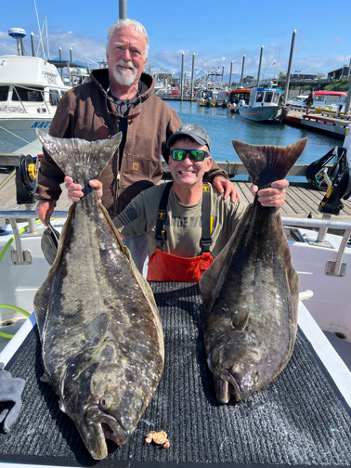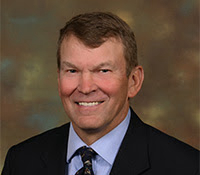The team at The Hunting Wire asked me to write some articles focused on leadership in conservation and the outdoors. This is the first of those articles—I look forward to your feedback.

Soldiering runs deep in my family: my dad was a Huey pilot with a couple of tours in Vietnam, my son is a Soldier with nine combat deployments, and I spent 37 years in the Army. Hunting, fishing, and all things outdoors runs deep as well. One of the places we lived when I was growing up was Ft. Huachuca, in the mountainous region of Southeastern Arizona. When I went to high school there in the 1970s, I spent as much time outside as I possibly could. I’d hunt ducks in the morning before school, go climbing or caving after school, and gig frogs at night. Weekends meant longer backpacking or elk hunting trips.
I had a couple of great role models for that period of my life, and one of them was Randy Breland. Randy had been an infantry sergeant in Vietnam, was seriously wounded, and came home to earn a degree in wildlife biology from Southern Mississippi. When I met him, Randy was working as a biologist in the fort’s game management branch. In short, he was everything I wanted to be: an infantryman who led from the front, a wise and experienced outdoorsman, and a dedicated scientist who understood complex relationships and leveraged his knowledge to make a difference for wildlife. Randy was my role model.
Randy Breland had many great achievements in his life, but I want to draw focus on one: he is the single person most responsible for the reintroduction of Gould’s turkeys in the United States. Most American outdoorsmen are familiar with the more common subspecies of wild turkeys in the US: Eastern, Rio Grande, Oceola, and Merriams, but few know that we have a huntable population of Gould’s turkeys in Arizona. Gould’s turkeys had historically lived in the “sky islands” of Southeastern Arizona but had been extirpated due to overhunting and habitat loss. Clark Derdyn, the head biologist at Ft. Huachuca’s game management branch in the late 1970s, directed Randy to develop a project to reintroduce Gould’s turkeys to the Huachuca mountains.
Randy started his scoping and coordination in 1977. To put it mildly, his patience, tenacity, and adamant refusal to be defeated by institutional inertia and bureaucracy would be challenged before he could make it all happen. Randy’s tireless efforts and coordination with the US Fish and Wildlife Service, The US Department of Agriculture, the Department of the Army, the Arizona Game and Fish Department, and Fauna Silvestre (the Mexican government’s wildlife agency) eventually paid off. He and Derdeyn made the team’s first reconnaissance of potential trapping sites in the Sierra Madre mountains of Mexico in 1979.

Jeff Buchanan retired as a Lieutenant General from the Army in 2019. He had four combat deployments to Iraq and one to Afghanistan. He also led the military forces supporting FEMA in Puerto Rico after Hurricane Maria and commanded more than 6,000 troops on the Southwest border in support of CBP. He and his wife live on a small ranch outside of Patagonia, Arizona and he is one of five commissioners for the Arizona Game and Fish Department.
|
Four more years of coordination and rehearsals culminated in the first successful trapping of 17 Gould’s turkeys in Mexico in 1983. The NWTF had donated special waxed turkey transport boxes and a writer from National Geographic joined the effort. Randy and his team endured many nights camping in remote areas in challenging conditions to make it all happen. Some of the birds died when the team got held up at the border by Mexican customs and then had an extended 39-day quarantine period in the US. Daily feeding, monitoring, and medical care provided by Randy and the post’s veterinarians minimized additional losses. Nine Gould’s turkeys were released into the wild on 9 May 1983. Several repeat trips and additional releases have led to a delisting of Gould’s as a threatened subspecies by New Mexico and a thriving population in Arizona. We now have Gould’s turkeys in six of Arizona’s 15 counties and there are limited (by drawing) hunt opportunities in the state. Our thriving population of Gould’s turkeys is the result of years of hard work by many agencies and individuals, but it all started with Randy Breland.
I learned many things from Randy over the years, but the most important were the values he taught me through his personal example. Randy lived and demonstrated the Army values of loyalty, duty, respect, selfless service, honor, integrity, and personal courage every day. He was dedicated to the mission and did not give up when the going got tough. I’ve thought a lot about Randy over the years and how I followed his lead, even long after we parted ways. The example you set for others really can make a lasting difference in their lives, and you may not even know about it.
The “rest of the story” is a good one. I had lost contact with Randy for more than 40 years. After his time with the Army, Randy had a long, successful career with the US Fish and Wildlife Service working, and then retiring, in his native state of Mississippi. When I retired from the Army in 2019, my childhood friend asked me to do a stint working on his charter boat as a deckhand and I loved it. I’ve been back every year since and helped “Captain Greg” Sutter and his clients on the Tomahawk II fish for halibut and salmon out of Homer, Alaska. Last year, Randy and some of his friends were on the boat. We had a great day and caught some nice fish, but the best part for me was to catch up with my old mentor.
In that sense, we are all mentors, and we all set the example for others. Somebody is always looking up to you, hoping to follow your lead. Try not to disappoint them.